Simulation Center celebrates five years of technological innovation and growth

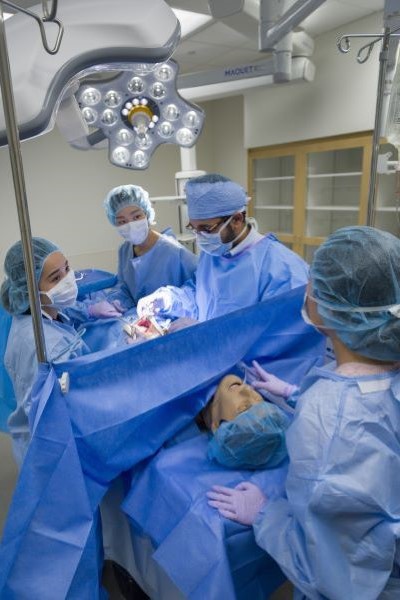
When Deborah Farr, M.D., Associate Professor of Surgery, wanted to use robotic surgery to improve treatment for breast cancer patients, she turned to UT Southwestern’s Simulation Center for help. There, she not only developed a technique using a new, smaller da Vinci robot, but she was able to hone her skills in preparation for the innovative procedure.
In 2020, UTSW became the first hospital in the nation to perform a single-port robotic nipple-sparing mastectomy.
“I was lucky to work closely with the Simulation Center for years. It was this opportunity that exposed me to and taught me about the benefits of robotic surgery,” Dr. Farr said. “Anything that we can do to move the needle forward to give our patients better care is worth achieving.”
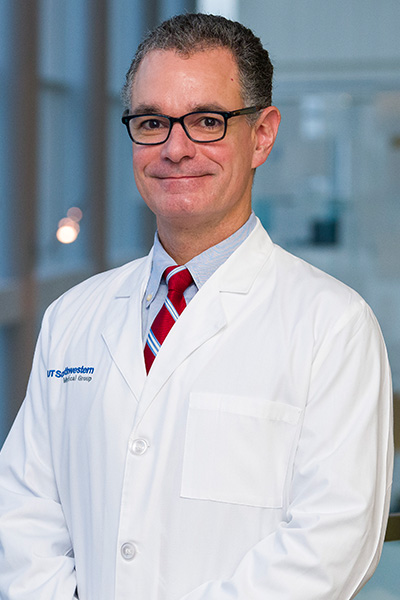
Innovation is a hallmark of UT Southwestern’s Simulation Center. As it celebrates its fifth anniversary this fall, the Sim Center continues to embrace new technologies, including artificial intelligence, to expand the scope and quality of its training programs for medical students, residents, health care providers, and other learners. The Center also attracts international visitors to Dallas for training.
In fiscal year 2022-23, the Center logged over 26,000 learner encounters, up more than 5% from the previous year. During the same period, it also hosted 1,703 events, up nearly 13%. That volume, and its breadth of training, have made the Center one of the largest and most advanced facilities of its kind in the world.
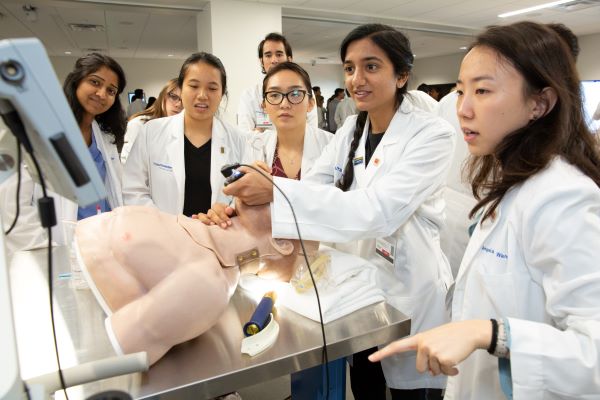
“The leaders of our institution deserve a great deal of credit for having the vision to create the UT Southwestern Simulation Center,” said Daniel Scott, M.D., Director of the Center and Assistant Dean of Simulation and Student Integration at UTSW. “By modernizing our resources, the Center has had a transformative impact on our campus. Learners are exposed to leading curricular methods, patient safety is enhanced, and new technologies are explored. The Center has set UT Southwestern at the front of the pack, leading through innovation and scholarly activity, and providing us with a truly premier facility.”

Located in West Campus Building 3, the Sim Center sets up real-life situations in a simulated environment. Its offerings range from the technical – suturing and learning robotic surgical skills – to the more complex dynamics involved with teamwork and communication.
The 49,000-square-foot facility has 20 exam rooms and six inpatient hospital rooms, all of which have cameras and microphones to record learning encounters for later reviewing, which enhances comprehension.
The Center also has five spaces that replicate specialty environments: an emergency room, an intensive care unit, an operating room, a labor and delivery suite, and a robotic operating room. Each of those areas has an adjacent control room to monitor what’s happening and facilitate authentic scenarios. Lessons often involve high-fidelity manikins that closely mimic human characteristics such as breathing, crying, showing vital signs, even talking.
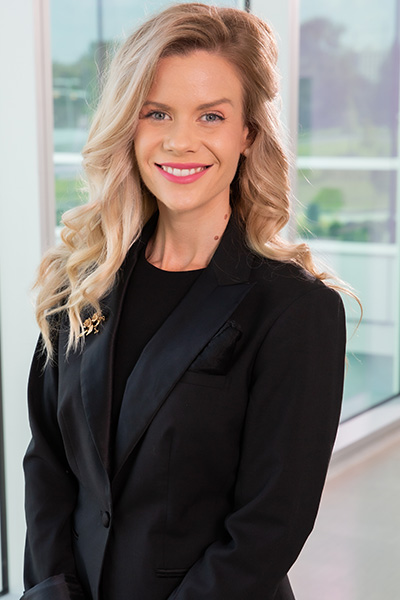
The Center is one of the few in the nation to have an actual robotic system used exclusively for training. Last year, it became the first in the world to install OR Black Box technology, which records all aspects of a surgery, in a simulated environment. The data is analyzed, with a goal to improve quality and efficiency.
“With over 113,000 learner encounters and nearly 6,000 events over the past five years, we’ve become a campus resource like no other,” said Krystle Campbell, D.H.A., M.S.M.S., CHSE, Director of Operations for the Center. “We have an amazing, creative, and passionate team of simulation professionals, health care providers, and researchers. Together, through the power of health care simulation, we are paving the way for improved patient care.”
“As part of our culture here, simulation is woven in such a way to allow the learner to excel,” Dr. Campbell said. “It’s about molding the students’ academic careers to make them the best clinicians they can be by the time they graduate.”
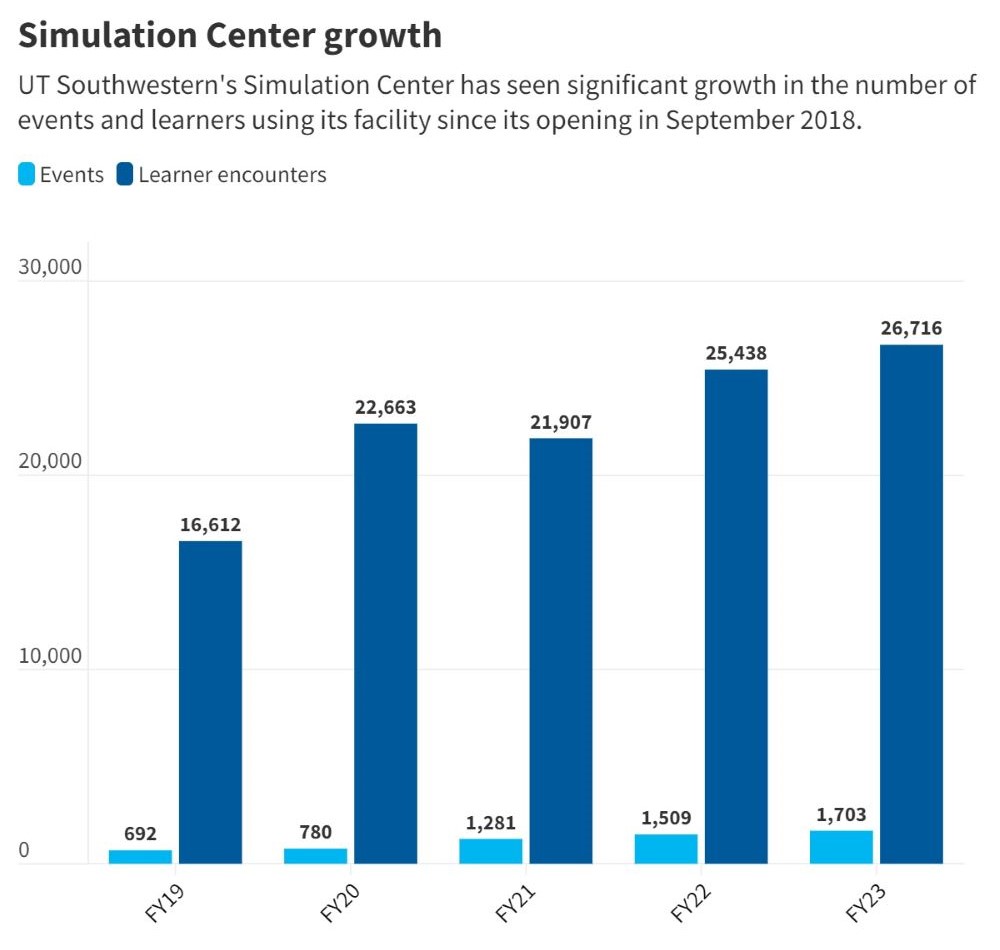
Simulation: Examples of how it works
Jessica White, PA-C, Assistant Professor of Physician Assistant Studies in the School of Health Professions, said the Sim Center creates a uniform learning experience with certain objectives so students can practice their skills.
Many lessons involve exams with standardized patients – people trained to portray the role of a patient. The Center’s team includes more than 100 expertly trained standardized patients.
“A simulated learning environment forces students out of their comfort zone, and it requires them to think critically and test their knowledge independent of a classroom setting,” Ms. White said.
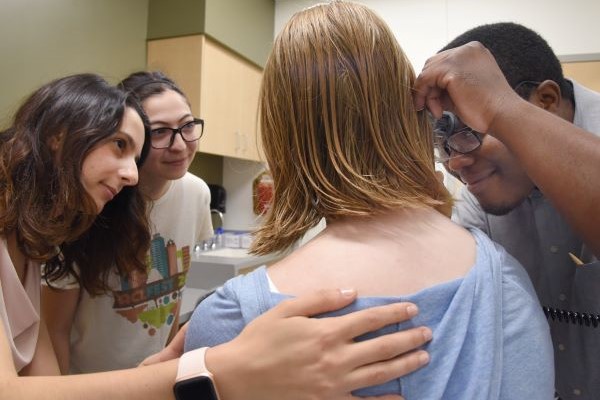
Taylor Charron, who holds a B.S.A. in neuroscience from UT Austin, is a fourth-year medical student and serves as Chair of the Simulation Governance Student Subcommittee. She said the resources through the Center have been invaluable.
“To be able to learn through deliberate practice rather than more passively through lectures is a vital component of medical education,” she said. “It’s really nice to be able to practice skills in a safe learning environment that isn’t as high pressure as it would be with a patient.”
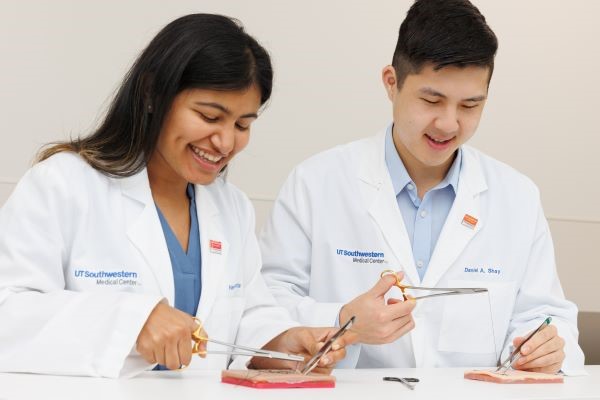
Adding AI analysis
Students are assessed not only by their instructors, but also by the standardized patients. And the Center is looking to use AI to expand that feedback.
Michael Holcomb, M.S., a Data Scientist II with the Jamieson Lab in the Lyda Hill Department of Bioinformatics, is part of the team integrating artificial intelligence into the Center. Already, the written notes that students compile after standardized patient encounters are evaluated with assistance from AI. The team has developed a protocol that incorporates expert oversight with human in-the-loop judgments to grade notes according to established rubrics. Mr. Holcomb said the next iteration, still under development, involves analyzing data available through the Center’s audio and video recordings to provide students with in-depth feedback in a timely manner. The project is part of the broader priorities within UTSW’s Six-Year Strategic Plan.
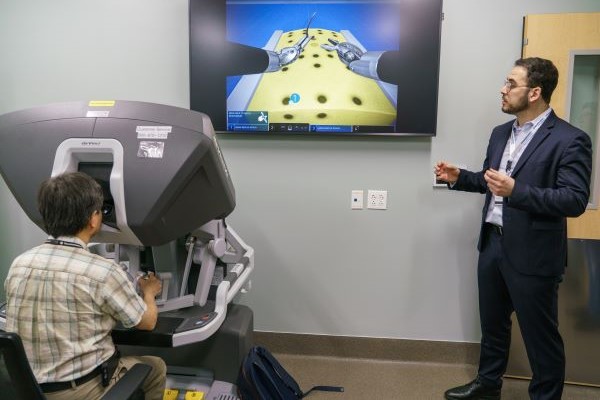
With standardized patient encounters, for example, AI could measure whether the student spoke too fast, used too much jargon, or gave the patient less opportunity to talk. Did the student ask the right questions, reach the correct diagnosis, or recommend the appropriate treatment plan?
“Not only are we excited about enhancing feedback to students, but also improving how we measure students in a way that just wasn’t possible a few years ago,” Mr. Holcomb said.
Honing teamwork skills
Bau Tran, M.M.S., Pharm.D., PA-C, Assistant Professor of Physician Assistant Studies in the School of Health Professions and Director of Interprofessional Practice and Education for UTSW, said a big part of simulation is about strengthening communication and collaboration.
“Training through simulation really allows a lot of the health care professionals to practice and refine these clinical skills before we expose them to real patients and real potential risk,” he said.
The Sim Center offers verification of 13 competencies considered essential by the Association of American Medical Colleges (AAMC). It also provides hands-on instruction in more than two dozen content areas in undergraduate medical education. However, the largest learner group to host simulations at the Center is graduate medical education, with 19 of the 21 clinical departments leading activities for their residents and fellows. In addition, the Center regularly holds continuing medical education courses that attract practicing physicians, nurses, and providers from across the nation.
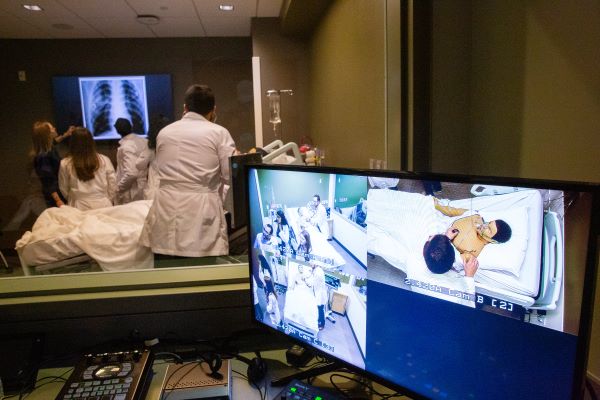
The team at the Center also embraces opportunities to create new simulations. An instructional design specialist on staff can help faculty come up with course designs, simulation exercises, and assessment methods.
Efforts are underway to develop a core curriculum for graduate medical education to ensure standardized education and assessment are implemented in teamwork and communication across all specialties. Five of the Center’s largest departmental clients will be participating in the pilot, with future efforts to expand the core curriculum to all 21 departments.
“The Center showcases this institution’s commitment to the value of medical education using simulation,” Dr. Scott said. “The fact that we’re five years down the road and have an average annual growth rate in learner encounters of 14% attests to that.”
Dr. Scott holds the Frank H. Kidd, Jr., M.D., Distinguished Professorship in Surgery.

